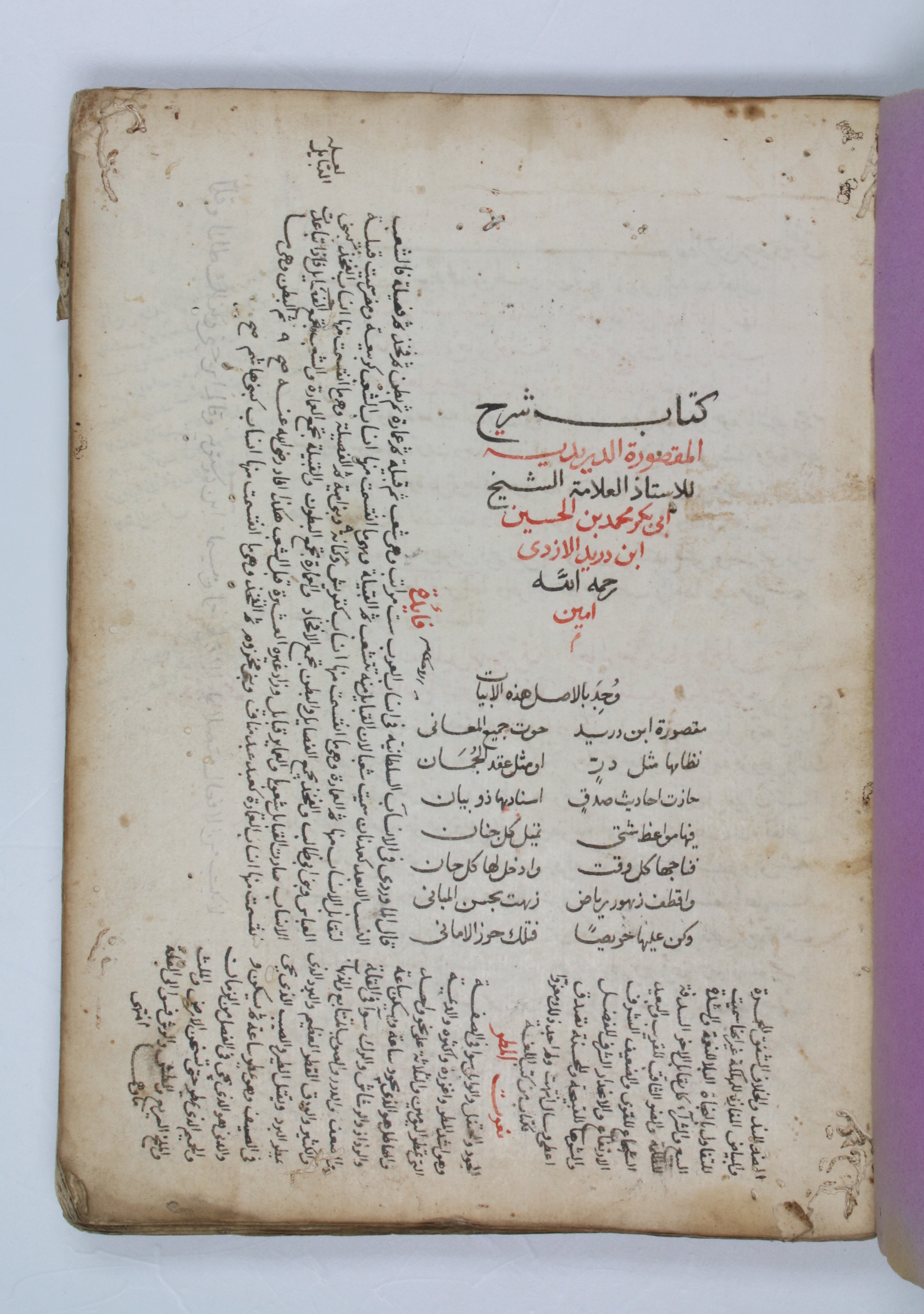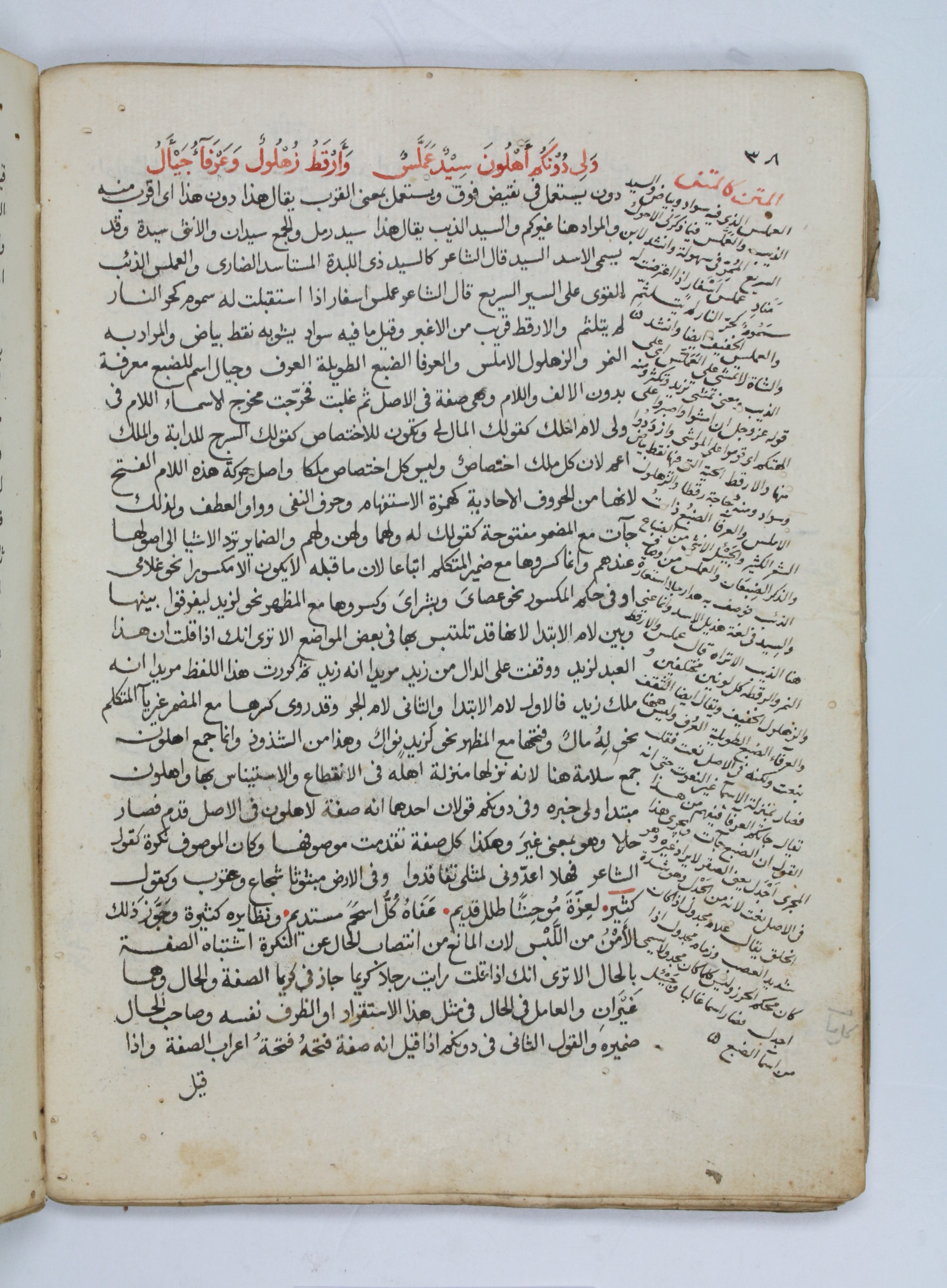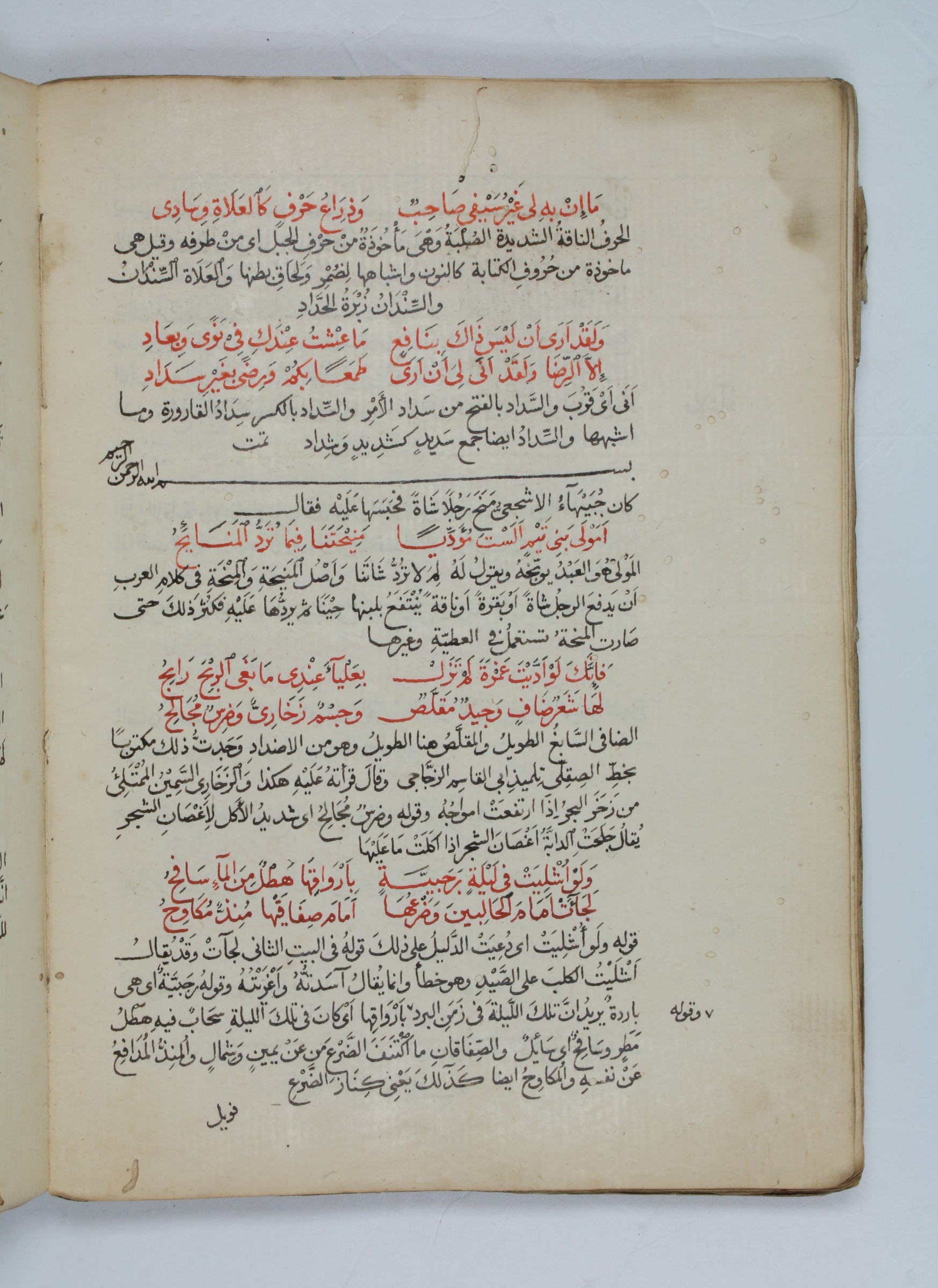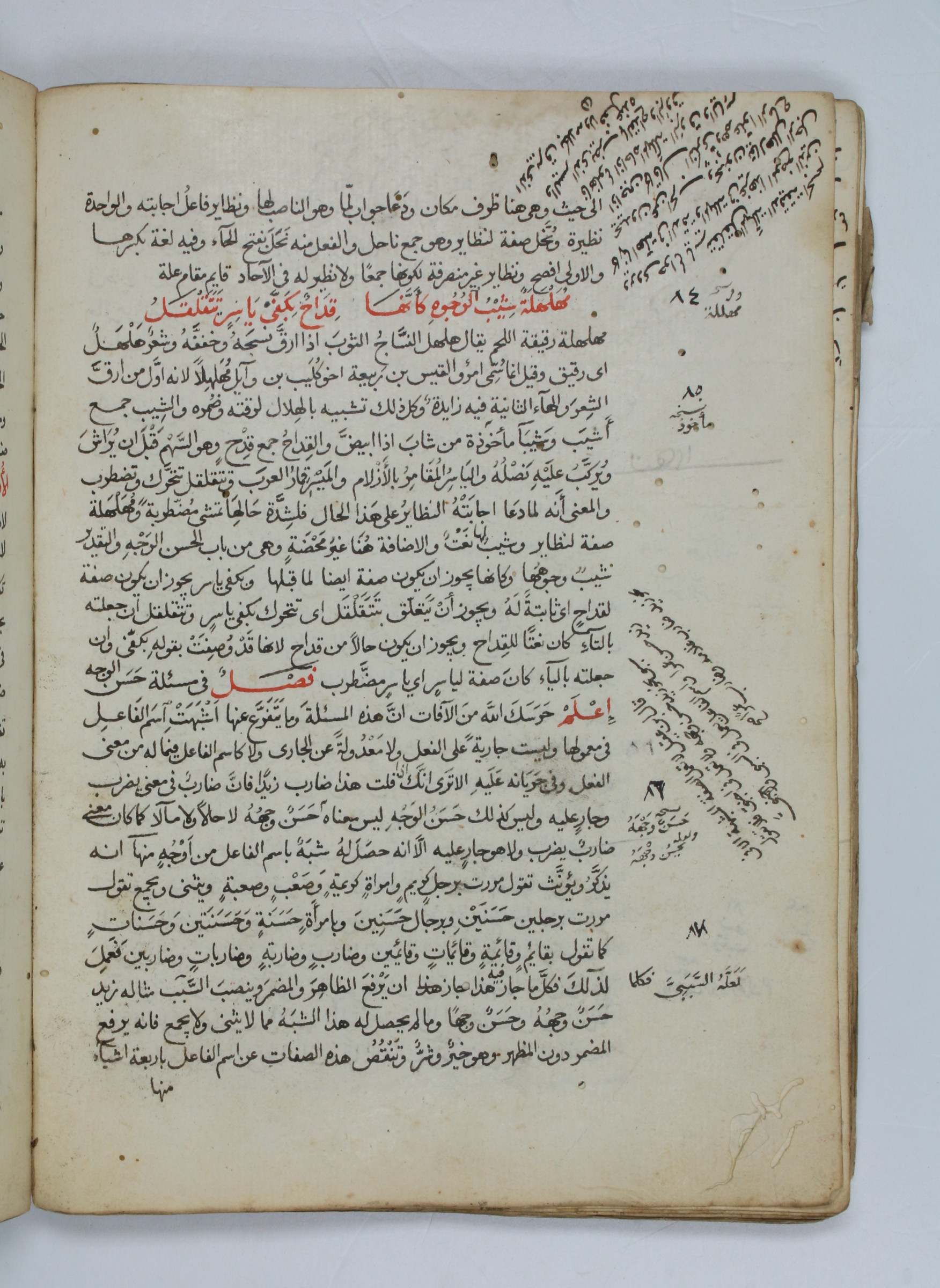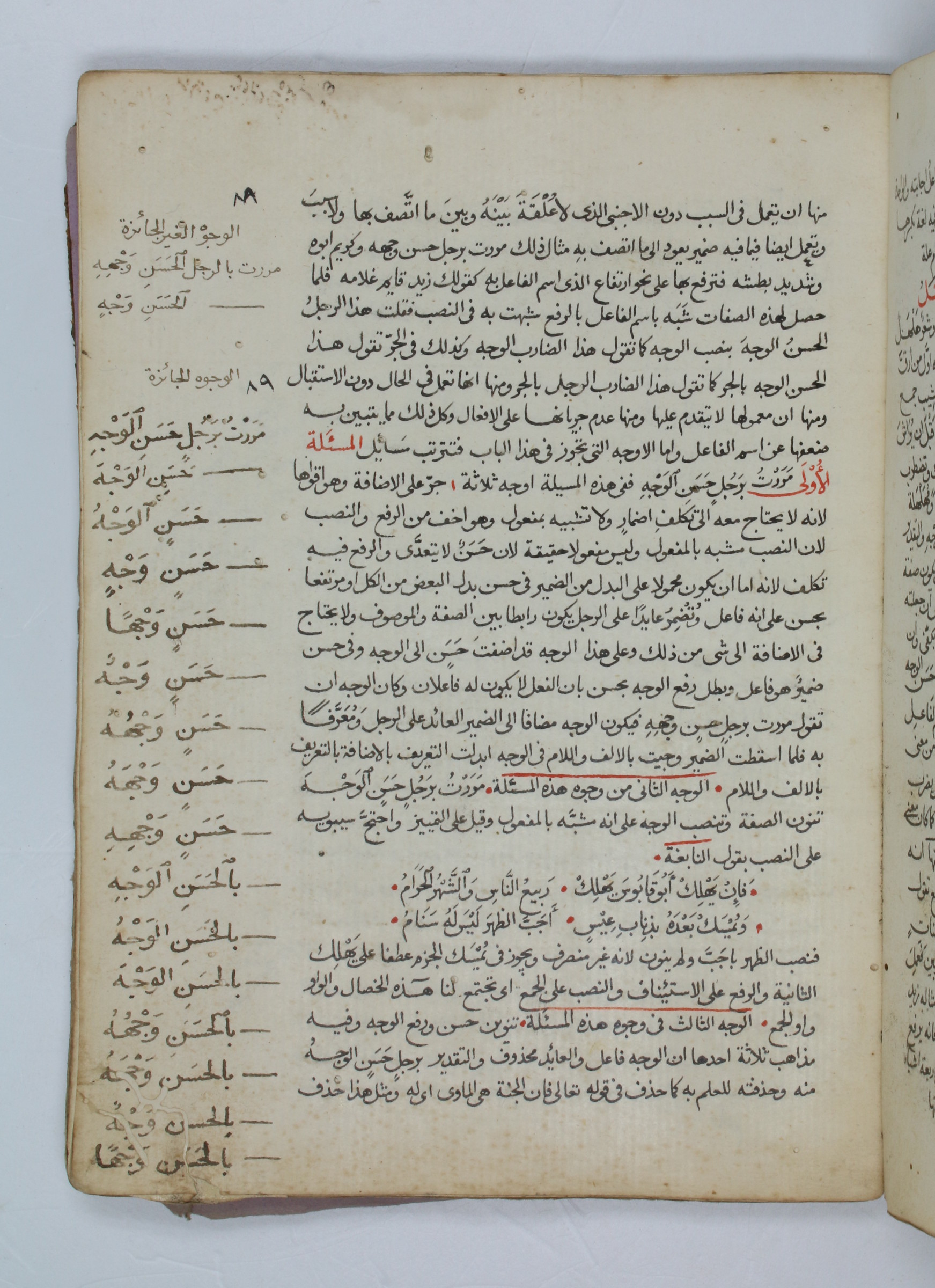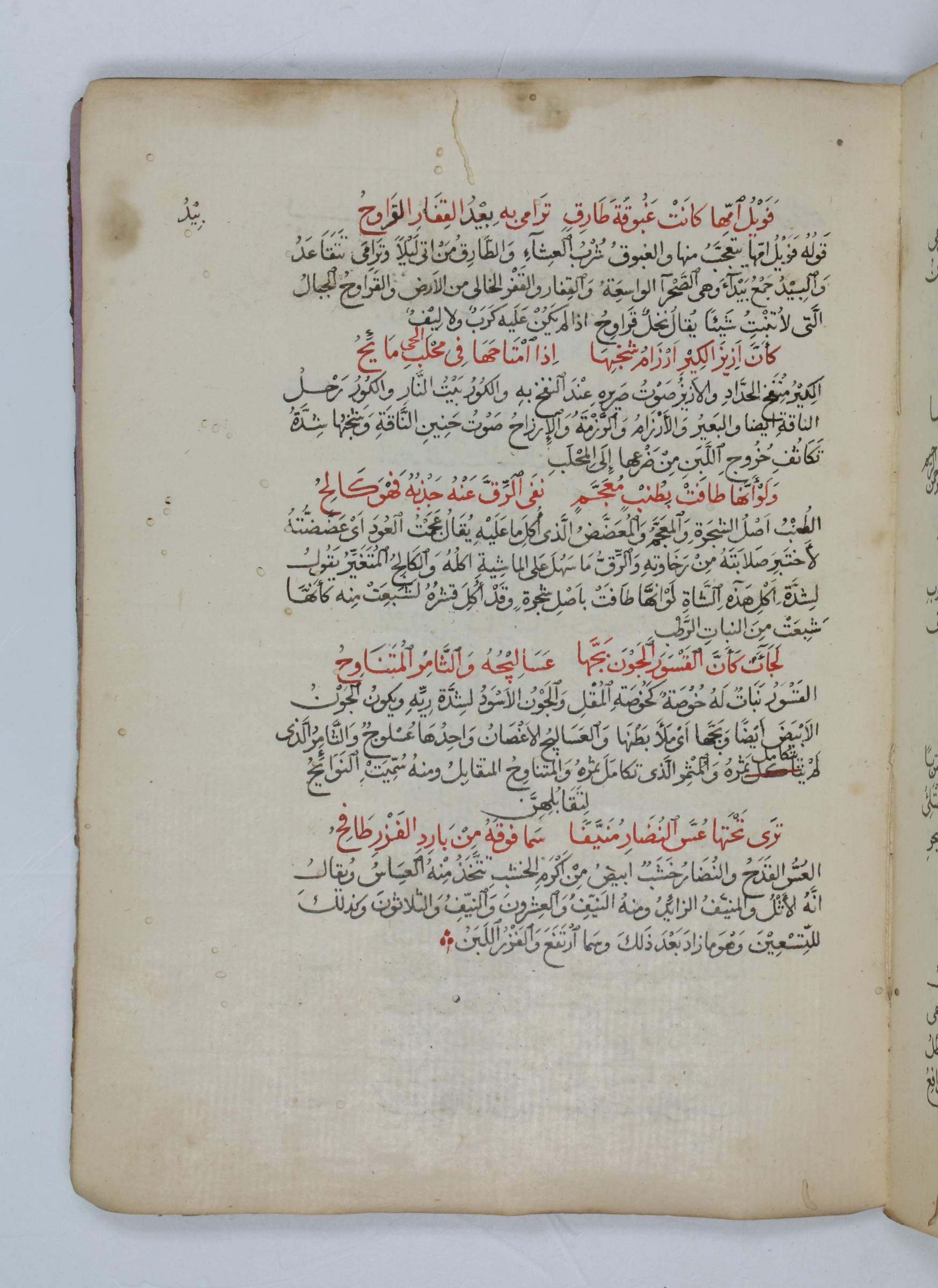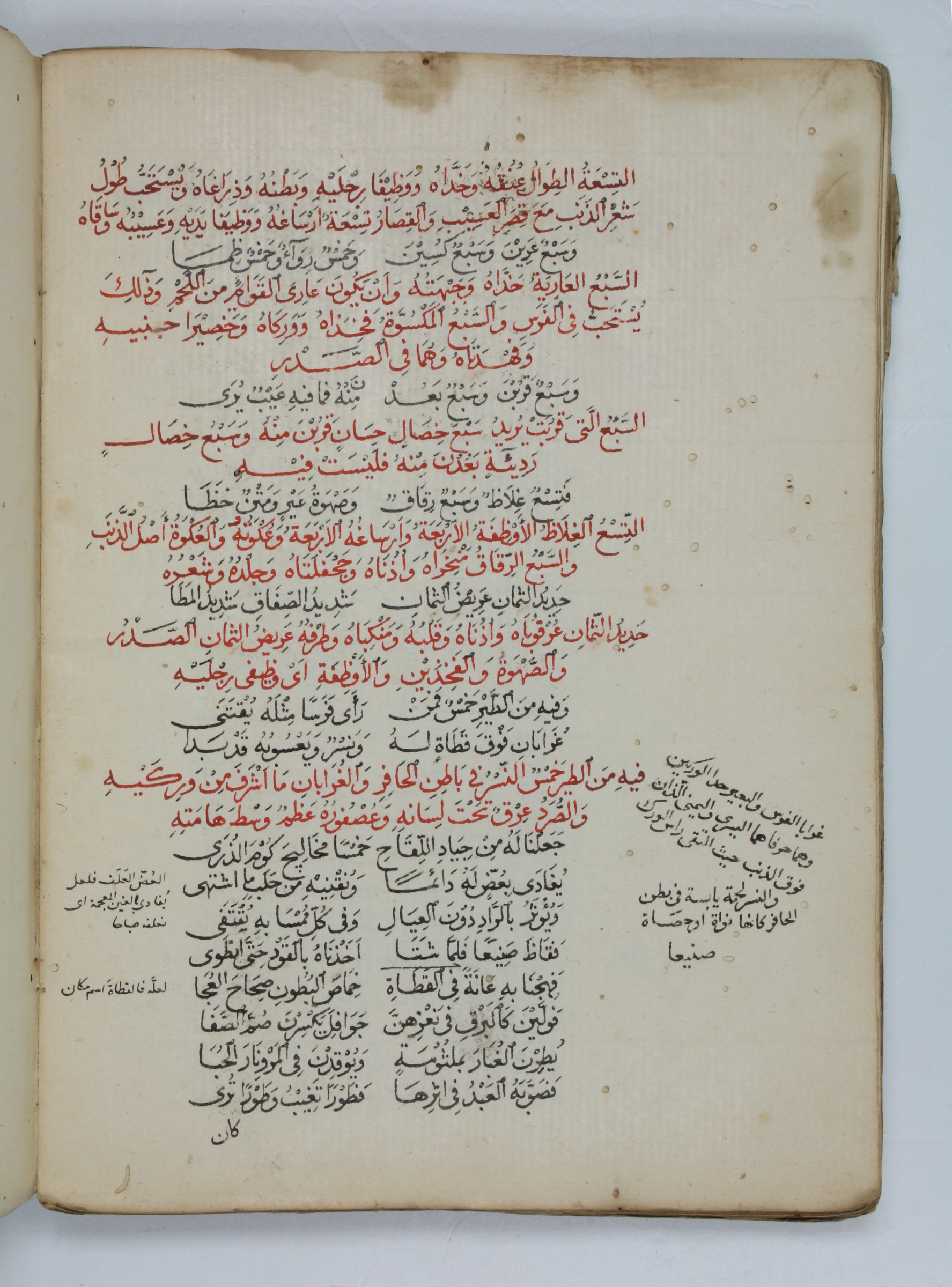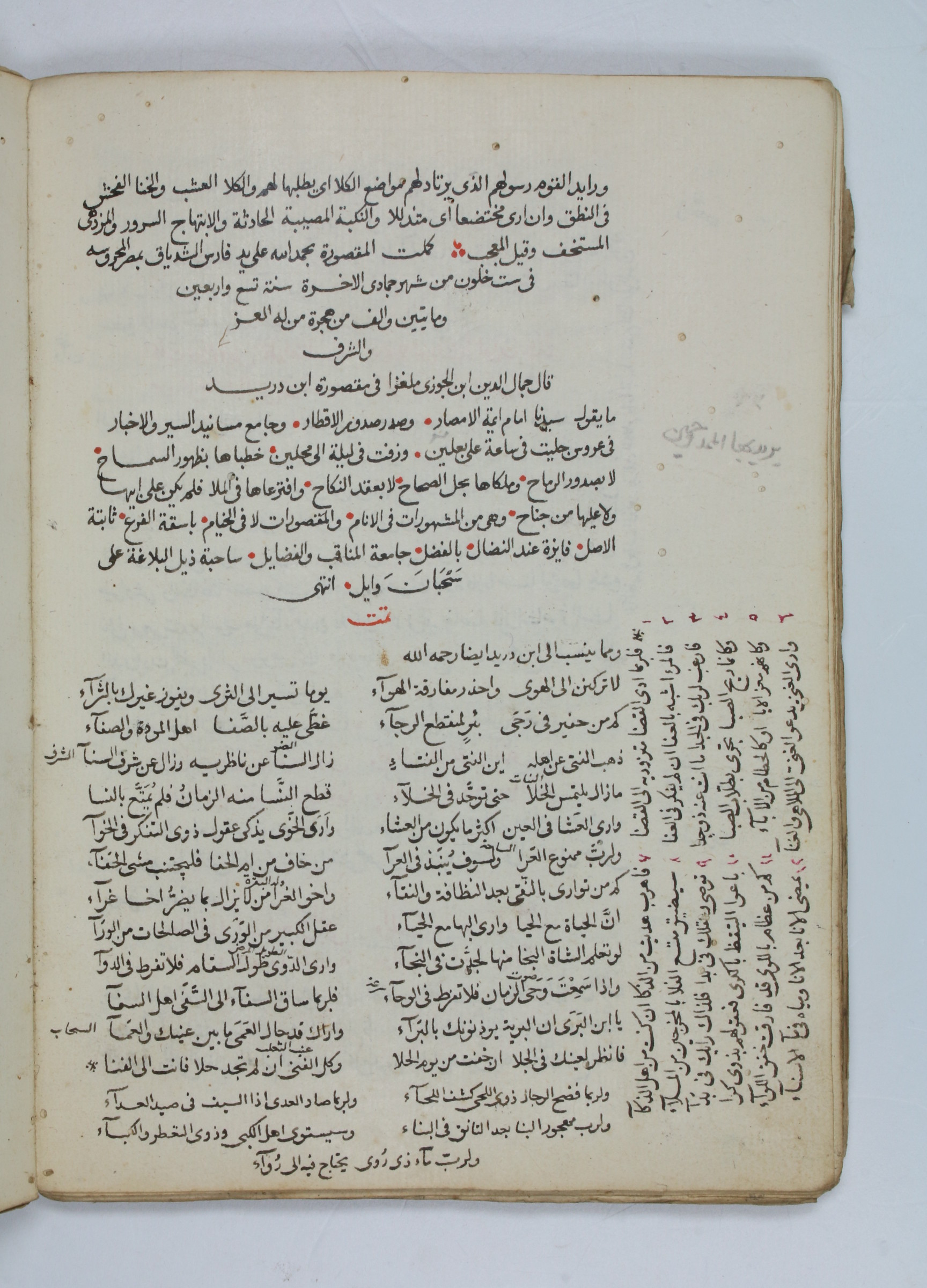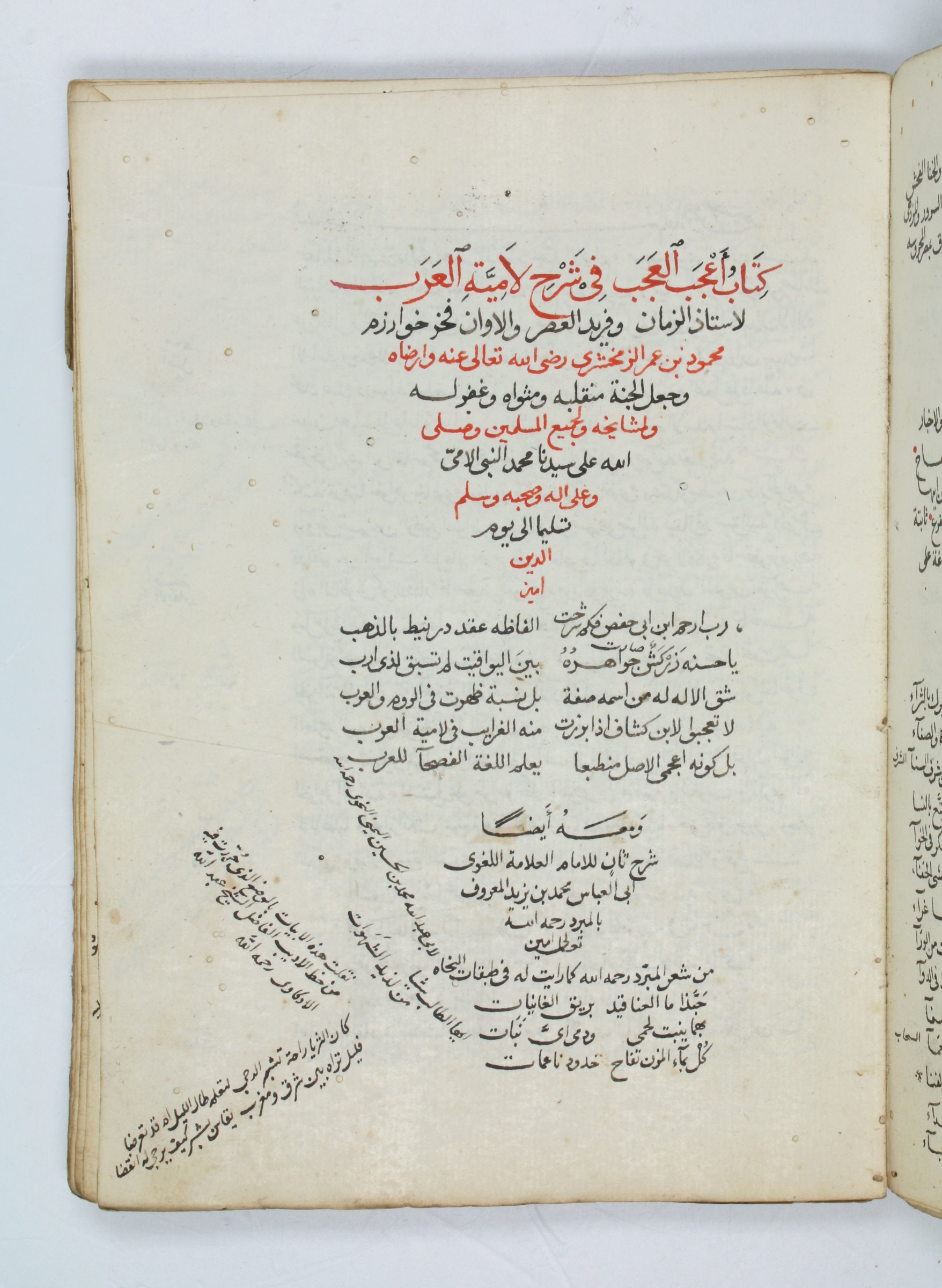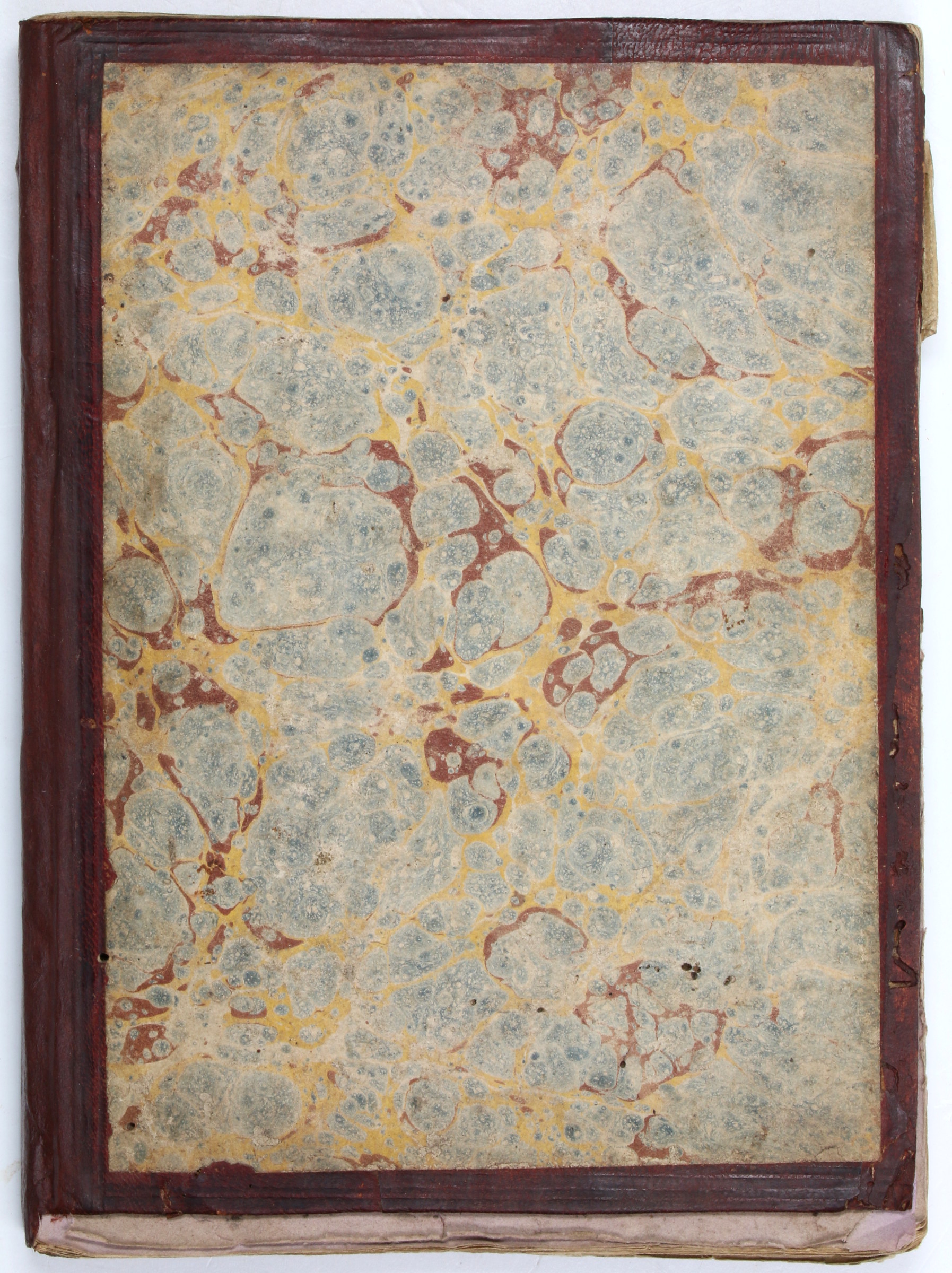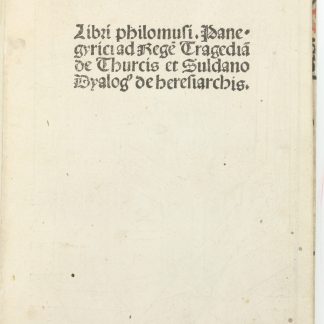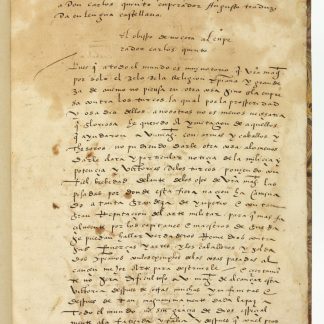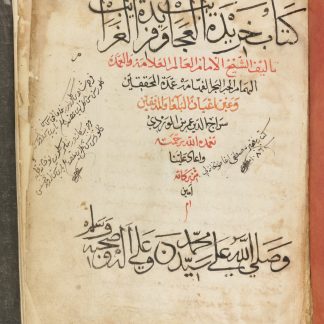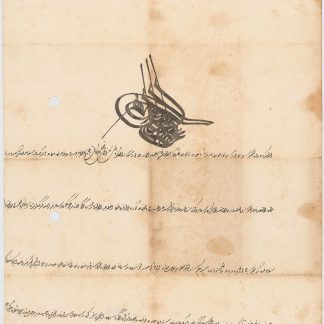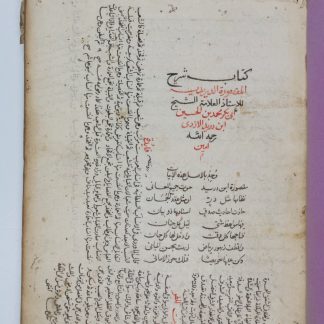Owned and copied by a major figure of the 19th century Arab renaissance
Sharh al-Maqsurah al-Duraydiyah [Commentary on Ibn Durayd's Book of the Compartment] and two other works.
4to (158 x 217). 112 pp. (last 3 blank). Arabic manuscript on polished paper. Black naskh script with important words and phrases picked out in red. Contemporary calf with marbled covers. Purple endpapers.
€ 35.000,00
Three works in one manuscript, all copied by a father of modern Arabic literature. Ahmad Faris al-Shidyaq (1804-87), born in Lebanon to an Arab Maronite family, converted to Islam in 1860 and spent much of his later life in Istanbul as the editor of an Arab language newspaper. In recent years, scholars have taken a renewed interest in Faris al-Shidyaq and his role in the "nahda", or Arab renaissance of the 19th century. Several biographies have been published, recognizing his struggle to modernize the Arabic language and educational system, as well as his defence of Arabic culture and language against the Turkization movement across the 19th century Ottoman Empire. As such, he is considered one of the founders of modern Arabic literature and journalism. As part of these efforts, two texts from this manuscript were published in a literary compilation on Faris al-Shidyaq's press in 1882, and some of the extra notes and poetry on title-pages and other parts of this manuscript appear in exactly the same arrangement in the same publication, pointing to this manuscript as the original source.
The first of three works is a commentary on the "Kitab al-Maqsurah" of Ibn Durayd, a eulogy in praise of the 9th century Persian military commander al-Shah 'Abd-Allah Ibn Muhammad Ibn Mikal, who served under the Abbasid caliphs, and his son Abu'l-Abbas Ismail. Also known as the "Kasida", the work attracted numerous commentaries.
This is followed by a commentary by Abu al-Qasim Mahmud ibn Umar al-Zamakhshari (1074-1143) on Al-Shanfara's "Lamiyat al-Arab", the crowning text of pre-Islamic Arabic poetry. Al-Shidyaq's manuscript is completed by another commentary by Abu al-'Abbas Muhammad ibn Yazid (al-Mubarrad, ca. 826-898), a scholar from the Muslim Golden Age. The prevailing theme of this collection is clearly that of scholarly commentary on Arabic works with great historical significance, a fitting theme to match al-Shidyaq's life's work.
Extremities professionally restored. Some edge flaws and wormed throughout, more severely in some places.
GAL I, 211.

